First, the Peeriblah. If you’re in a hurry you can skip directly to the PASS IN REVIEW section.
The fall book publishing season; an important one for publishers, authors, reviewers and readers alike; is upon us and new books are falling like apples from trees. It’s a good time to pause and reflect a bit on the bigger scheme of all-things-book-related before digging in to this season’s harvest.
Book publishing is a big business because, in spite of what some pundits say, people do like to read and many people still prefer reading a book to reading something online. There are big commercial publishing houses, small boutique publishers, university presses and other special function publishers and printers turning out tens of thousands of book titles a year --- a number that just keeps growing.
The number of English-language books published, printed and sold each year runs into the tens, perhaps hundreds, of millions. They come in all forms: hardback, paperback, electronic devices like Kindle, audio books, etc. etc.)
But when all the numbers are put together it really comes down to two: a writer and a reader. It’s how they interact that keeps the book chain moving.
I heard years ago that the average Frenchman dies leaving a personal book collection (or a personal institutional library in miniature) of approximately 90 books and the average American dies leaving a personal book collection approximately 12 books and that includes a Bible, a dictionary, an Almanac (an average of three years old), and a cookbook (probably a gift from mom when he or she left home). Why the difference?
The 90-plus figure perhaps comes from two factors. The first is the number of books a single bookcase can hold. Or perhaps it is because the average serious reader in France starts at 15 and reads until he is XX, an average of two books a year. In France a person’s library begins with their school books and a book, once acquired, is rarely discarded or given away. Americans frequently discard or lend books with no expectation they will ever be returned. In America reading a book is something special. In France it is something that is expected.
At what point does a collection become a library? Most individuals collect books in a haphazard fashion, picking a book for any one of a number of reasons, but not often thinking about how each book will fit into or in time become a library that is, in some fashion, organized for storage and future use. How do we determine what books comprise our collection or library? The difference is, I think, happenstance vs. planned acquisition.
Most readers of this have heard of The 100 Great Books program of the University of Chicago. There are even similarly highly-lauded colleges and universities that base their programs on those books. The original list was heavy on the classics, philosophy and great works of literature. Today a contemporary list is filled with whatever the compiler thinks are the “greatest” books of the moment. Still, the basic intent remains the same: to make a great library small enough to be the basis of an individual’s private collection.
Just for fun let’s consider three collections that became libraries over the last two hundred years:
Jefferson’s Library (at The Library of Congress) 1815
Throughout his life, books were vital to Thomas Jefferson's education and well-being. When his family home Shadwell burned in 1770 Jefferson most lamented the loss of his books. In the midst of the American Revolution and while United States minister to France in the 1780s, Jefferson acquired thousands of books for his library at Monticello. Jefferson's library went through several stages, but it was always critically important to him. Books provided the little traveled Jefferson with a broader knowledge of the contemporary and ancient worlds than most contemporaries of broader personal experience. By 1814 when the British burned the nation's Capitol and the Library of Congress, Jefferson had acquired the largest personal collection of books in the United States. Jefferson offered to sell his library to Congress as a replacement for the collection destroyed by the British during the War of 1812. Congress purchased Jefferson's library for $23,950 in 1815. A second fire on Christmas Eve of 1851, destroyed nearly two thirds of the 6,487 volumes Congress had purchased from Jefferson. In today’s dollars Congress paid $319,000 for Jefferson’s collection or about $50 per volume. Of course their real value today would be priceless.
Harry Widener’ Collection and Memorial Library (at Harvard) 1915
Weidener’s collection of books was donated to Harvard after he died on the Titanic. It was housed in a library building that his family donated and which today holds some 3.5 million volumes. Again the only word that describes the collection is priceless.
Association of American University Presses. (140 or so around the world, wiki worldwide list)
Larry Peery’s Collection and Archives 2015
An atypical “baby-boomer’s library, my collection and library was based on my life-long reading pattern: 10 years of one book a day = 3,650 books, 45 years of one book a week = 2,340 books, 4 years of one book a month = 60 books, or a total of approximately 6,050 books (largest number of volumes in my library at any one time was c. 2000 volumes). (Note: This does not include magazines, journals, etc. or my own writings, LPs, CDs, etc.) At its peak the library and archives collection filled some 300 banker boxes carefully arranged in a two-story, double garage.
My library reflects my collecting tastes as they have evolved over the last half-century or so. It has a definite niche feel to it which, as you might have guessed, is “dip&DIP” (diplomacy and Diplomacy)--- most things in it are related to one or the other or both, although the links are not always easy to see.
For years I’ve used a five-star rating system to determine how “good” a book was. Usually I gave a book two numbers, one for its literary merits and one for the value of its contents. It worked, but over the years I found my values for the various values were changing or, perhaps, I was becoming a more demanding critic. Recently I’ve gone to a system based on the one Kirkus Reviews uses which rates books as: Buy (books to keep and reread), Read (books to borrow and read once), and Pass (books to avoid). It also works and I’ll use it, generously, below. Generally speaking I don’t review books that I grade as a Pass.
I’ve been asked several times how I manage to acquire and read so many books. Over the years I found an alternative to paying full price or any price at all for many books, especially from the better publishers and university presses. I would ask them for a review copy and enclose a list of other books I’d reviewed recently and a sample review. It worked. After a while I didn’t have to ask --- the books arrived from the PR departments faster than I could read them. After reading and writing a review (from a paragraph to multi-page depending on the book and audience) I’d add the book to my collection, gift it to my school library, or donate it to a worthy library in places as diverse as Mexicali, Baja California and Mt. Hagen, PNG. It was a win-win situation for everybody. Today I’ve found a different method that serves the same purpose but saves a lot of trees. It simply replaces a physical book with a PDF file. It saves a lot of paper, time, and money --- and makes my mail carrier a much happier person.
As any historian or biographer will tell you, writing a biography of a still-living historical figure can be problematic. Mikhail Gorbachev is a case in point. Henry Kissinger is another. And just imagine the challenges that will face the writer(s) of the definitive biography of Donald Trump?
This time we have: 2 novels, 1 play, 2 biographies, 3 histories, and 2 books devoted to current events. They are: Cherry Blossom In Winter, A Legacy of Spies, Queen Anne, Gorbachev: His Life and Times, The Cold War: A World History, The Taking of K-129, A Force So Swift: Mao, Truman and the Birth of China 1949; Asia’s Reckoning: China, Japan and the Fate of U.S. Power in the Pacific Century, China’s Asian Dream: Empire Building along the New Silk Road; and a move of the bookmark to Theresa May and Ataturk.
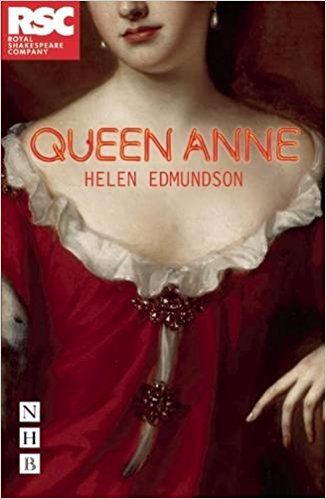
The author is a US Army vet, teacher and writer of popular fiction novels.
I didn’t find this book, it found me. If you saw the effort I put into my “Golden Age of Dip”-style press in the Youngstown IV Diplomacy Variant that was published in DIPLOMACY WORLD a couple of years ago and remember my press about Admiral Walter Buchanan and HIH the Grand Duchess Esmeralda you can understand my enthusiasm for this historical novel about the same period and some of the same events. I’ll let you read both and decide which you liked better.
The two have many aspects in common: a major historical event, a decisive sea battle, palace political intrigues and various romantic subplots.
Singerton’s subject is a good one and even offers some insights into why Russia and Japan are still at loggerheads more than a century after their first war. It’s an easy read and entertaining --- just what you’d expect from a historical novel (well, except for War and Peace or Winds of War, I suspect).
Rated: READ
The author of four popular books on the Cold War and modern Chinese history. Westad, a Norwegian, has proven to be a popular writer and competent historian with a slightly different peerispective from most American and European writers trying to bridge the gap between the Cold War as current events and history. Given that the Cold War began the day the Russians crossed the Elbe (April 25, 1945 --- Optimists may recall that this was the same day the first meeting of the new United Nations organization was being held in San Francisco, CA) the Day the Trinity test (July 16, 1945) took place, or August 15, 1945; and ended at the Reykjavik Summit (12 October 1986), the night the Berlin Wall came down (9 November 1989) or the night the Soviet Union was dissolved (26 December 1991; Westad does a good job of covering 46 years of worldwide history in 600 or so pages. He focuses on the globalization of communism seen against a historical background that dates back some 300 years. Much of it is familiar territory but Westad puts it together nicely in a form that mixes facts and nuances nicely that an average reader can digest. My only real criticism of The Cold War is one it shares with many other recent current events turned into history --- the author tries to make the whole story fit into one nice theory about what the cause of it all was. I understand why authors do it --- it’s much easier to write a book with a single main theme than to write one with many complex and inter-woven plots.
Rated: READ or BUY if you’re a serious student.
Author’s first book is a retelling of “How the CIA used Howard Hughes to steal a Russian sub in the most daring (and expensive) covert operation in history”.
This story has been told many times by now but even knowing the ending doesn’t detract from a remarkable story of how American technical know-how and naval skills brought a hunk of a Soviet-era sub up from the bottom of the Pacific to a final rest in San Francisco Bay. It’s a great Cold War thriller and although this account doesn’t bring anything new to the story it’s a good read. One footnote is the story of what became of the remains of the sub after the CIA had picked its carcass of anything of value. The CIA has never confirmed whether they actually found the code books, cypher machines, torpedoes or missiles they were looking for; but we do know they had quite a clean-up mess when their job was done. Eventually and most secretly most of the radioactive debris was moved to a marshy area on the south side of Hunters Point Naval Shipyard on the lagoon across from Candlestick Park; covered over with a heavy layer of mud, sand, rock, and trash; and forgotten. It wasn’t until years later, after the shipyard was closed down that a developer decided that the site (not knowing its previous history) would make a good location for a new housing project. The rest I leave to your imagination. (Hint: If you look at a Google map of the area look for the spot where the grass isn’t growing very well. Also note that even worse example of this kind of project is located across the Hudson River from Manhattan in one of the most polluted areas in the United States.)
Rated: READ

After thirteen novels the eighty-six year old English author John le Carre brings George Smiley back to life. Again. For the ninth time. And to fifteenth place on the NYT best sellers list.
Is there a Dipper who has never read a John le Carre mystery? I don’t think so. And is there a newspaper or pulp magazine that hasn’t run a puff piece about le Carre in the last thirty years? I don’t think so. In fact the only question I don’t think he’s been asked that we’re all dying to know the answer to is “When was the last time you trimmed your eyebrows?” Dunno.
But, as always, when looking for a dip&DIP angle for this review I decided to explore Le Carre’s home supply center black dot and, along the way, do a bit of “what if” speculating on what Allan Calhamer might have done if Diplomacy had sold as well as le Carre’s novels. You might want to pull out your Google, Bing and Zillow talents to follow along with this story.
Where and how a man writes say as much about him as what he writes about, or the kind of game he designs.
Le Carre’s writing career (24 books from “Call for the Dead” (1961) to “A Legacy of Spies (2017)) spans the history of the game Diplomacy. Over the years the sales of tens of millions of his books have enabled him to buy a mile ocean frontage estate in Cornwall.
A coastal view estate on the Cape in Cornwall goes for about $515K an acre. 3 old cottages and a barn near St. Buryan, Cornwall became a single place Le Carre calls Tregiffian that he’s lived in for nearly fifty years. He loved it for its quiet peacefulness and the lack of people. But, with his fame and fortune, the locals looking to make a buck and the tourists’ spy-peepers got to be too much. His quiet Cornish coastal hamlet became a home for fancy B&Bs and tourist attractions alike. So what did le Carre do about it?
In 2000 he gave a stretch of coastline to the National Trust to keep it “out of the reach of human predators”. The value of the property was estimated at some $5 million.
The best-selling author of spy novels, whose real name is David Cornwell, has a house tucked away on rugged cliff tops near Land's End at Tregiffian, Cornwall, below which is the half mile of coastline which he is donating.
I am delighted to be able to add another bit of coastline to the public heritage,
said le Carre, 68 at the time. It is a small step in the vital conservation of this constantly threatened area. I hope many more landowners will join me in putting precious coast land for all time out of the reach of human predators.
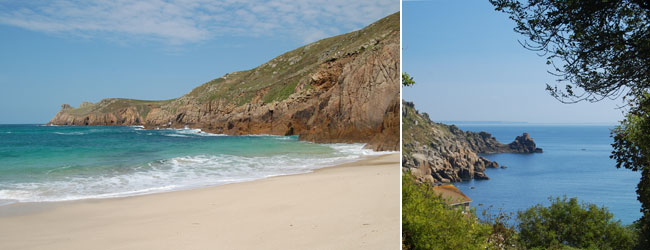
Above is Land’s End in Penzance, Cornwall
What if Allan Calhamer had retired “to the manor born” instead of staying at 501 N. Stone, La Grange Park, Illinois and used his profits from game sales to buy his own personal black dot instead of paying for his two daughters education, as he told me once he’d done?
If ABC had sold as many copies of Diplomacy as le Carre sold spy stories, he would have been able to acquire a mile lake frontage property on Lake Michigan (land is running about $20K a frontage foot in the Holland, MI area), so figure around $10.5 million for a prime site with a value about the same as le Carre’s name. I picked Holland, Michigan for as the site for obvious reasons. After all, who in their right mind would want to live in Livonia, Michigan?
Below is coast of Lake Michigan in Holland, Michigan
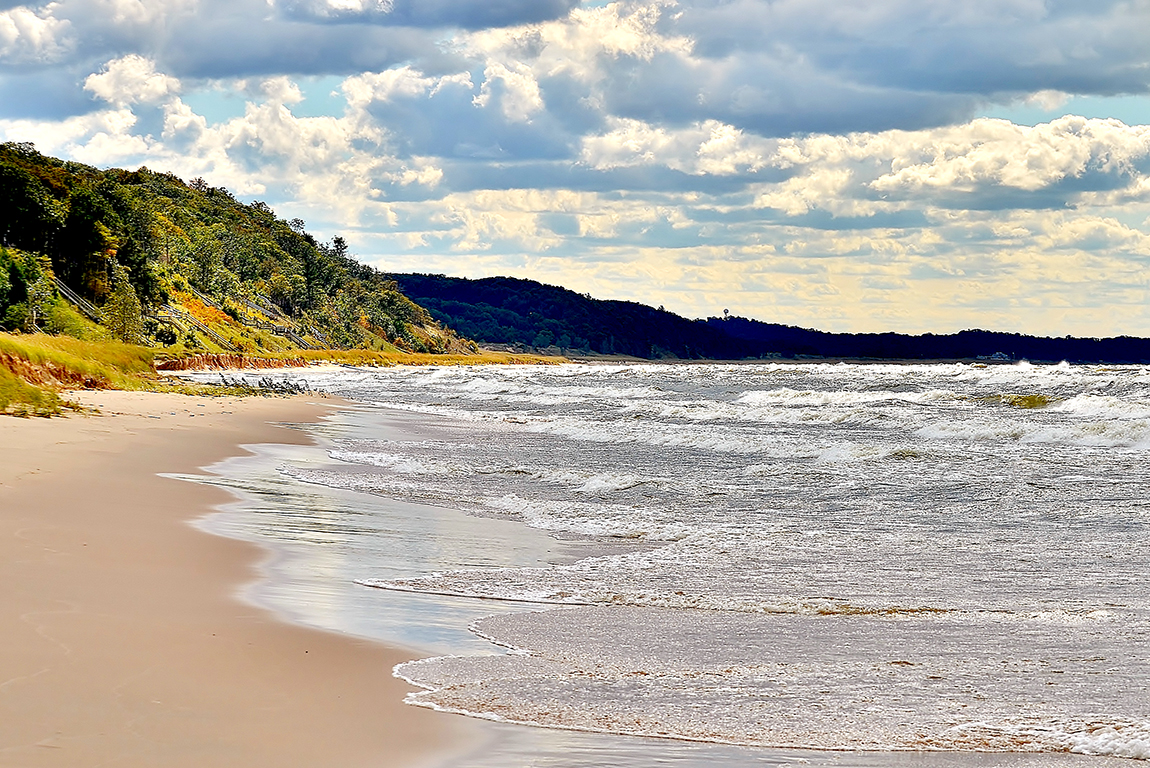
Rated: BUY if you’re a le Carre fan, otherwise a READ.
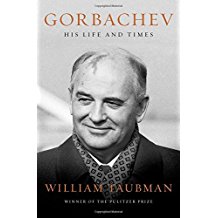
The author is an American, Harvard-educated, political science professor at Amherst College. His 2004 biography of Khrushchev won a Pulitzer Prize and is still considered the definitive English-language biography of Khrushchev.
Gorbachev, ironically far more popular in the rest of the world than his homeland, is unquestionably the most important Russian leader of the second-half of the 20th century. The story of his gain and then loss of power is a fascinating one, especially given the Soviet Union and Cold War background.
Taubman’s masterful biography shows us many things: that the collapse of the communist Russian Empire, Soviet Union, USSR, Warsaw Treat Organization, etc. was inevitable is one. The only surprise was that it took as long as it did. Another was that replacing it would be a two-step process, one to bring the old empire down; which is what Gorbachev did; and another to create a replacement; which is what Yeltsin started to do. But where Gorbachev dreamed of glasnost and perestroika, Yeltsin dreamed of oligarchs and a drunk, but happy, socialist workers and peasants paradise. Both were transitional figures. It was not until the arrival of Putin that Russia completed the circle and brought back the new empire supported by the oligarchs, military and church led by a new tsar, himself, with a strong Napoleonic complex --- to the joy of those who looked to the future to restore their glorious, drunken past.
Today writers and scholars focus on Putin and Xi in China and neglect the forces and individuals who paved the way for or resisted their rise to power. Unfortunately, without an understanding and appreciation of Gorbachev, Yeltsin, Hu and Wen will not clearly understand and appreciation Putin and Xi.
This is, unquestionably the best English-language biography of Gorbachev available.
Rated: BUY
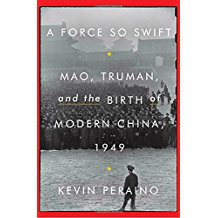
The author is a veteran foreign correspondent. His first book was a biography of Lincoln.
Nearly seventy years after it ended western historians are still arguing about whether the end results of China’s Civil War (1927-1950 with a brief interruption for WWII) were a result of a combination of accident and luck or fate. Deciding on the “right” foreign policy for an established power confronted with a revolutionary state is difficult at the best of times and impossible in the worst of times. I’ve always been amazed that the United States, with all the emphasis it places of its own revolutionary heritage, has done so badly in coming to grips with other nations’ revolutions.
Too often we think of the Chinese Civil War as a battle between Mao’s communism and Chiang’s democracy instead of seeing it for what it really was --- just one more in a long history of wars to seize “the mandate of heaven”. The vast majority of the people of China don’t care about communism or democracy --- they just want to be left alone to make a life for themselves and, hopefully, a better life for their children. It’s that simple. Peraino realizes this; which is good.
He also realizes that behind the obvious war between Mao and Chiang was another war going on between Stalin and Truman. One was a hot war and the other was a cold war, until writers decided it was a Cold War, but war it was. Peraino’s book is important as a history but also as a primer to understanding what is happening in China and between China, Hong Kong and Taiwan today. Peraino writes about the birth of Modern China but we must not forget that well over sixty years later China is going through a serious mid-life crisis. The new China may be dressed in fine new clothes but its vital signs are not so healthy.
Rated: READ or BUY if a Cold War or Chinese history student.
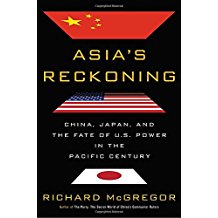
Australian-born journalist, writer and author. This is his third book on Asian affairs.
Americans often find it difficult to comprehend what is going on between China and Japan today because they look at the long and bitter history between the two and fail to understand how that past history is used by political forces today in both countries for their domestic purposes. Xi and Abe both realize that their countries need a foreign enemy to blame for their domestic problems. There isn’t an outstanding problem between the two countries that couldn’t be resolved peacefully and quickly, but both find it useful to have a “whipping boy” at hand in case of need.
Add to this the fact that the United States is still a Great Power, even across the Pacific, that is capable of using and being used in the Chinese-Japanese disputes and conflicts and you have a potent mixture that could explode at any time. Such an explosion need not occur because of the three major powers. Others: North Korea, South Korea, Taiwan, and Vietnam have proven that they are masters at playing the game of Pacific Century diplomacy.
The strength of McGregor’s book is the depth of his research, particularly in the archives of the major players. He reminds us that there are great tides at work in the Pacific that are beyond the control of mere humans. China must deal with an increasingly growing and demanding population. Japan must deal with an aging and decreasing population and increased competition for scarce natural resources. The United States must deal with a population that is deeply divided, ill at health and also aging. Like Peraino, McGregor points out the weakness of these countries vital signs and the dangers of political opioids to the masses.
Rated: READ
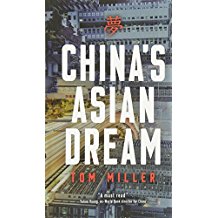
A long-time British Asian correspondent and journalist the author has written two books on China’s demographics and economics.
China sees its new Silk Road as a logical extension of its original one. The United States see it as yet another example of China’s attempt to take over the Pacific, Asia and the world. Older generations think back to the days of the Marshall Plan and how better things were then. And younger generations just ask, “What’s in it for us?”
Miller has lived in Asia for years and two of his interests are demographics and economic trends. In this informative book he looks at the potential, for good and bad, of the New Silk Road. The dream is a good one he suggests but the reality isn’t quite so rosy, at least for the third-world countries that are staking so much on it. He does a good job of bringing together a lot of information from a wide variety of media sources and others that makes the progress of the project look good, at least as seen in Beijing, but not so good to others who have airports with no flights, ports with no ships, and railroads with no passengers or freight to haul --- all built by Chinese workers and paid with loans financed by Chinese banks and government agencies. My bottom line conclusion: the road builders of ancient Rome have nothing to fear.
All in all, he suggests, and I agree, that when the bubble bursts this will make the collapse of the great trading companies of the Indies or Russian Alaska Company seem like nothing.
Rated: READ
The author is a British playwright and screenwriter who has won many awards.
The play is about “women, love and power” but, if you don’t know your history going in, the plotline may surprise you. Anne may have made fancy wigs and deep bodices fashionable, but did she make lesbianism popular at the royal court of her day?
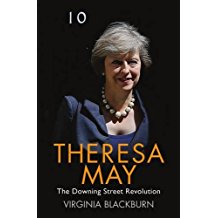
There have been three biographies of May published to date; none of them very flattering.
The play opened a couple of years ago at the RSC in Stratford and just moved into the Royal Haymarket Theater in London where the play got mixed reviews for the writers, good reviews for the actors, and a sudden new interest among England’s “royal watchers” --- Queen Anne. Ironically, it was Niall Ferguson, Scotland’s Henry Kissinger wannabe, who thought to compare Queen Anne and PM Theresa May in a recent essay entitled “Queen Theresa and the English Secession”. I wonder how many times a day Theresa thinks of Churchill’s famous line, “I have not become the King’s First Minister in order to preside over the liquidation of the British Empire.”?
While the play is no “Hamlet” or “Lion in Winter”; in the right theater (Stratford was, Haymarket is not) with the right casting (it has that) “Queen Ann” is an enjoyable evening’s theater as only the English can do English history. However, seeing the play without previously reading a bit of that history turns it into just another “Was she or wasn’t she?” mystery.
Rated: READ
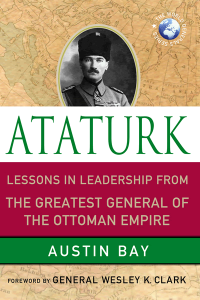
Austin Bay (I confess: every time I type that name I have to check to make sure my fingers didn’t type it as Austin Bey.) has had an interesting life: kind of a hybrid cross of Ian Fleming and Tom Clancy. While this book is no “Leadership Secrets of Attila the Hun” it does offer some well-told and interesting tidbits about the life of Ataturk, the father of Modern Turkey, unless Erdogan gets his way. If you want a good, serious scholarly history of the fall of the Ottoman Empire and all the fighting and political intrigue that entailed then read Eugene Rogan’s “Fall of the Ottoman Empire” that I reviewed last issue. However, this book is a great companion to a project I’m currently working on --- a review of Darin Leviloff’s two games “Ottoman Sunset The Great War in the East 1914-1918” and “Hapsburg Empire”: which deals with the problems of the Austrian-Hungarian Empire in the same war. Yes, I’m actually going to review a hex-sheet and die “shooting crap game”, something I haven’t done since most of you were learning how to play Anzio and Gettysburg. I’m not attempting it alone. I’ve cajoled one of the hobby’s leading experts on the Hapsburgs to help me with this project, as well as a couple of experts on Turkish history. So, you might want to read Bay’s book for some insights into Ataturk’s thinking and Rogan’s book to understand why Enver Pasha and the other Young Turks were so interesting, both then and now.
Rated: READ
A few final thoughts that close-out what I was writing about in the Introduction:
The Essential Ten, Five and Three Rule: is simply based on the idea that if you read ten different articles, papers or books on almost any given subject you should get a fairly balanced perspective and, therefore, you can call yourself a dilettante! If you pick them carefully you can do the same thing with just five readings and call yourself a student. Finally, if you read and understand what I call The Ideal Three (one of each extreme and one in the moderate middle zone), you can call yourself an armchair expert.
Thoughts on what books to read, buy and pass. If you want a book filled with dates, facts and minutiae --- buy a book by a historian. If you want a good story --- buy a book by a good fiction writer who can tell a good story. If you want a good biography – buy a book by a player (e.g. one who actually participated in the events under discussion). If you want to experience actually being there when great events are happening --- buy a book by an experienced and well-traveled journalist. And if you want a good memoir --- buy a book by someone who can create great word pictures that come to life.

|
Larry Peery (peery@ix.netcom.com) |
If you wish to e-mail feedback on this article to the author, and clicking
on the envelope above does not work for you, feel free to use the
Dear DP...
mail interface.